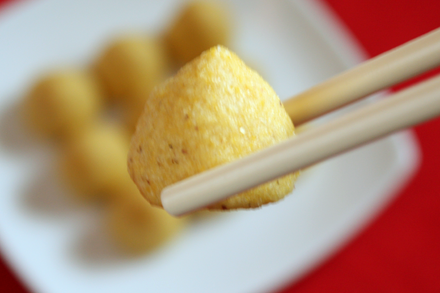
At first I noticed a few blocks of broken links on some Web pages. Then I started receiving “connection timeout” and “server reset” messages. Access to my favorite places like Facebook, Twitter and YouTube was unsuccessful. Furthermore many food blogs I regularly visit were inaccessible as well. These were not symptoms of a widespread network failure, but rather the result of surfing the Internet from Shanghai. Such was the extent of the “great firewall” of China I encountered during my travel there last fall.
Known as “scaling the wall” (翻墙), Chinese Internet users use proxy servers and commercial VPN to circumvent the great firewall. Like many natives I was able to use a proxy server to gain access to sites outside of China. So why then would the Chinese government continue to censor the Internet? A Chinese blogger “huoleifeng” published a very poignant post last summer when he temporarily suspended his blog, which was hosted overseas. In the article he alleged that the government tactics work. A majority of the Internet users are not savvy enough or unwilling to go through the trouble to circumvent the censorship. Others succumb to emotional exhaustion of endless technical manipulation and slow access. Even for me, there were times when I just simply gave up and stopped posting on Facebook and Twitter because the proxy server access was slow as molasses.
Deeply rooted in the Confucian tradition, Chinese people are accustomed to the paternalistic rule of their government and many even support it. The majority of the population simply lives with the restrictions. Others quietly attempt to evade government rules or bribe their way around them. Although their numbers are increasing, only the radical few openly defy the government.
Living within the great firewall is a very constricting existence. Politically sensitive information is not the only casualty of the censorship, but also cultural, educational and other information. In the government’s attempt to suppress Chinese political blogs hosted overseas, the great firewall blocks both blogger.com and wordpress.com services. This means that many familiar food blogs hosted on these services are not available in China. Perhaps most Chinese food enthusiasts don’t access English food blogs anyway, but for those who want to learn more about foreign cuisines access is denied. This certainly is not the way for the Chinese to broaden their culinary horizons.
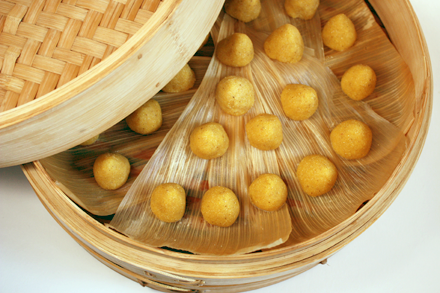
Sadly culinary informational disconnect is not new in China. The story of the Empress Dowager and the cornmeal cakes, xiaowotou (小窩頭), illustrates the Imperial court’s insulation from everyday life of the people. In 1901 during the Boxer Rebellion when Bejing was under siege by the Eight Nation Alliance Army the last Empress Dowager of the Qing Dynasty, Cixi, left the Forbidden Palace and fled to the western part of China. Forced to supplement her dwindling rations, she accepted the offering of cornmeal cakes from local peasants. She evidently fell in love with these cornmeal cakes that upon returning to Beijing, after her government signed the unequal Boxer Protocol, she ordered the Imperial kitchen to continue to serve them to her. I’m sharing a recipe for making xiaowotou below, and here’s to the hope that the Chinese people will be freed from the tyranny of the great firewall soon.



-
Xiaowotou – Steamed Cornmeal Cake (小窩頭)
-
- Preparation time: 1 hour
- Slow cooking time: 20 minutes
-
- Makes 40 mini cakes
-
- 1 cup yellow cornmeal
- 1/2 cup soybean flour (黃豆麵)
- 1/3 cup sugar
- 1 teaspoon baking powder
- 1/3 cup water
- 1 teaspoon cassia blossom (桂花) or 1/2 teaspoon vanilla optional
- 5 or 6 dried cornhusks
-
- Although served in the Imperial court of the Qing Dynasty, these cakes have peasant root and are made from very ordinary ingredients. They are simple to make, have a grainy texture with a sweet taste. Serve these cakes piping hot from the steamer to ensure the cakes remain moist.
- Put the cassia blossom, if used, into a measuring cup and pour enough boiling water to cover (just a little over the 1/3 cup marker.) Let steeped for about five minutes until the flavor of the blossom is infused into the water.
- In a bowl combine the cornmeal, soybean flour sugar and the baking powder. Make sure all the ingredients are mixed together well. Slowly add the plain water or the cassia water to make a dough that holds together but not sticky.
- Let rest for about ten minutes. In the meantime soak the cornhusks in warm water for about five minutes and line a wooden steamer with them. Wet your hands with plain water. Scoop out a teaspoonful of the dough and roll it into a ball. Press the ball into a round disk. Using one of your index finger press against the disk and use the other hand to fold the dough over. Slowly turn the dough against the palm with the index finger still maintaining an indentation at the bottom of the dough. The final shape of the cake should look like a rounded cone that fits on your index finger like a thimble.
- Arrange the mini cakes on the cornhusks in the steamer. Steam the cakes over boiling water for about 10 minutes. Serve immediately with fragrant green tea.



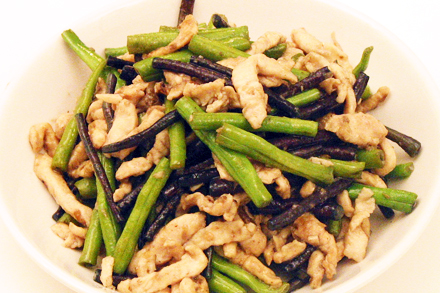
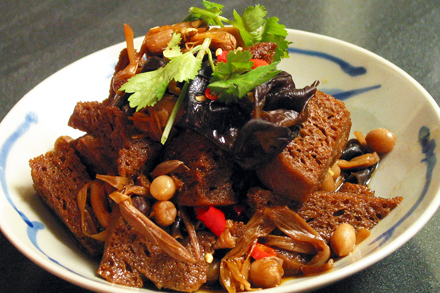
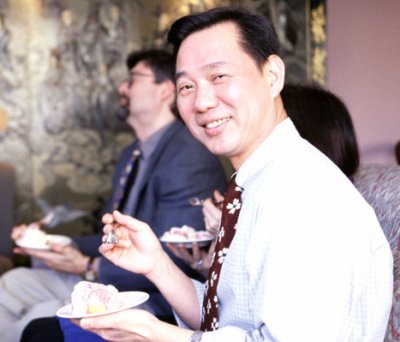
Kian, thank you so much for giving the world insight into the common struggles you have with the firewall. I’ve only started reading about Google’s decision to pull out of China, and I must admit, it’s really difficult for me to wrap my western free-commerce, free-information perspective around the motivations of censorship. I love reading your blog and I admire the creations that you share here. Keep up the great work!
Thanks Christine for you wonderful comments. Yes it is rather unreal for us accustomed to the Western open media environment to be in China. Your blog Fresh Local and Best is inaccessible in China right now. The increasingly restrictive environment actually is beginning to irritate many locals. Lets hope the government will recognize that they have gone too far.
The great firewall is much worse than it was when I lived in China. I was frustrated with it then; I couldn’t imagine dealing with that inconvenience now (after spending 10 months back in the US). Fortunately, my two important sites are still available on the mainland.
This dessert sounds familiar. I’m sure I tried it, but can’t remember it at all (actually, I can’t remember much of the sweet Chinese food, only the spicy).
That’s why I have no interest in going back at all.
Thanks for posting this recipe. I had the larger version of these in China. They are so delicious. Your clear instructions give me hope that I can re-create these myself!
Yes, they are delicious. Do try to make them. I think you will enjoy the cakes.
Kian, this is a wonderful post. I appreciate the depth of experience you share with us.